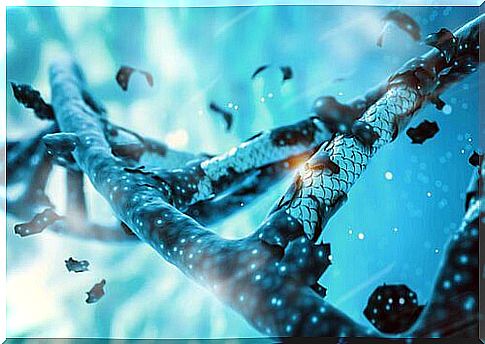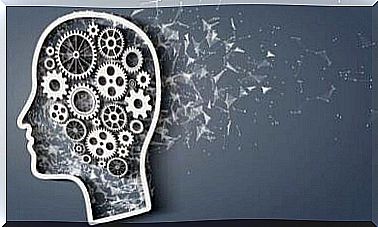Biological Psychiatry: What Does It Consist Of?

Biological psychiatry, or biopsychiatry, is a branch of psychiatry that attempts to understand mental disorders by focusing on the functioning of the nervous system. Its approach is interdisciplinary. It is based on sciences such as neuroscience, psychopharmacology, biochemistry, genetics and physiology. It is therefore the branch of medicine that studies the biological function of the nervous system in mental disorders.
Biological psychiatry appeared between the 18th and 19th centuries. It arose with the advent of psychopharmaceuticals around the 50s of the last century.
The German school has placed particular emphasis on neuroanatomy and histopathology. In the twentieth century, called the century of physics, a considerable progress has been made concerning technological instruments. This leads to a great development of basic science and results in better microscopy equipment, better imaging techniques, such as magnetic resonance tomography and positron emission tomography, even reaching nanotechnology. The latter will be widely used in the development of the Human Brain Project.
More on biological psychiatry
The development of biological psychiatry is linked to advances in technology. It occurred during the serendipal identification of neurotransmitters and receptors involved in the mechanisms of action of drugs. These were then perfected to produce blockages or activations of biogenic amines.

With the advent of psychopharmaceuticals and biochemical imbalance theories, a period of research into genetic elements linked to these biochemical variables also begins. Likewise, the way has been opened for the findings derived from this research to influence the evolution of diagnostic classifications.
However, so far no reliable biological markers have been reached, although current exploration techniques are apparently starting to bear fruit. For example, in studies of the biology of depression and brain scanning techniques, Helen Mayberg identified two circuits of great importance to decision making. These two circuits are important when the psychiatrist chooses the type of therapeutic approach for the treatment of depressed patients.
According to this study, patients who had basal activity below the mean level on the anterior insula responded well to cognitive therapy. On the other hand, patients above the average activity responded well to antidepressants.
Biological basis of psychiatric disorders
To talk about the biological basis of psychiatric disorders, we must necessarily talk about genetics. We know that there are genetic characteristics involved in the etiopathogenesis of mental illnesses (likelihood of onset of mental illness), but there are no genes identified yet. Despite this, there are candidate genes with a probable locus, but this remains an underdeveloped pathway.
Study 1
Let’s talk about a recent study by Marian L. Hamshere’s group. They reported a genetic association between attention deficit hyperactivity disorder with schizophrenia and bipolar disorder in children.
Almost simultaneously, an article appears in the journal The Lancet which shows that the 5 psychiatric disorders beginning in childhood or in adulthood (attention deficit disorder, bipolar disorder, autism, depression and schizophrenia) share factors of common risks.
Variations in genes for calcium channel activity appear to be very large in the 5 disorders. This fact gives us hope to identify new molecular targets for the development of psychotherapeutic drugs.
Study 2
Another area of genetic research is directed towards the study of how genetic mutations influence brain development. Most mutations produce small differences in our genes.
Researchers such as Murdoch and State have discovered a significant number of variations copied from chromosome 7. An extra copy of a segment of this chromosome greatly increases the risk of autism, characterized by the tendency to social isolation. Most interestingly, the loss of the same segment results in Williams syndrome, a disorder characterized by intense socialization.
This segment of chromosome 7 contains approximately 25 of the approximately 21,000 genes in the human genome. Despite this small amount, an extra copy or a copy without this segment has profound and radically different effects on social behavior.
This is further evidence of the biological nature of mental disorders. This in turn indicates that certain mental alterations, such as schizophrenia or depression, have an important genetic component.

The promises of the future
Advances in biological psychiatry are and continue to be linked to the development of technology. In the near future, we would get a lot of information about the brain from developments in nanotechnology, microelectronics and synthetic biology.
The developments that will be made available to neuroscientists for experiments and research are: the implant of nano-sensors, wireless optical fibers and living cells genetically designed to penetrate into brain tissue and communicate what, when and how neurons respond to different stimuli. This is the essence of the international project called Human Brain. Similar to the Human Genome which has contributed so much to the field of science in general. And genetics in particular.










